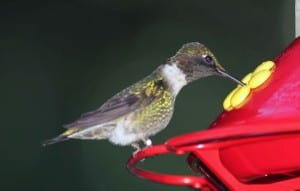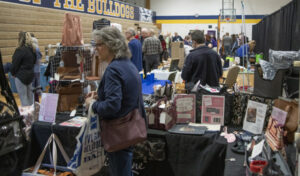 By Jennifer Farifield
By Jennifer Farifield
(Publisher’s note: This is the second part of a 2-part column. Part one published yesterday.)
Trees and shrubs:
- Prune back early-blooming shrubs such as forsythia and quince after they have finished blooming. This will encourage new growth and more flowers next spring. If you’re not sure about how or when to prune what shrubs, Cornell University offers good advice here. They have a similar page about pruning trees here.
- Don’t “seal” pruning wounds when you prune trees. The old way of thinking was that you needed to, in order to keep diseases from setting in. New information has shown that it isn’t effective, and can actually cause more problems by keeping the area moist. The only time sealing is recommended now is if you prune an oak tree any time other than in the dead of winter. The reason for this is that the flowing sap of a freshly cut oak can attract insects that carry oak wilt disease, which is deadly to the tree.
- You can pinch back evergreens once they have put out new growth. Pinching the new “candles” back by half will encourage them to bush out. But don’t cut into old wood, as most evergreens won’t produce new shoots from old growth.
- Be sure your trees and shrubs have a good layer of mulch over their roots to keep them evenly moist, and to prevent weeds. Mulch should extend out to the tree’s dripline (the circumference of the tree’s canopy), but not be placed right up against the trunk.
- Water trees and shrubs if we aren’t getting sufficient rain. Newly planted trees and shrubs should be carefully watered for the same reason newly planted flowers need to be – they aren’t as good at taking up water while the roots are getting established. But be careful about how you water any tree or shrub. Water infrequently, but deeply. You want to encourage the roots to grow deeply, which won’t happen with frequent, shallow watering. Additionally, shallow, frequent watering can cause your plants to suffocate and slowly die.
For the Birds:
When you are out in your yard, keep an eye out for things like killdeer nests (hey build their nests on the ground), and be careful to keep activity away from them as much as possible.
Also watch out for baby birds that have left the nest but not yet mastered flight. They probably don’t need your help, unless they are somewhere where they might be in danger, like in the road, but do watch for them as you go about your yard to be sure that you aren’t putting them in danger with things like power equipment.

This has been a really great season for Baltimore Orioles and hummingbirds. If you don’t have feeders for them, you really should – they are so entertaining, and they’ll stick around longer if you give them something to eat.
Clean out and refill hummingbird and oriole feeders regularly. Sugar-water left out in the hot sun can quickly spoil, and become bacteria-filled. If it’s really hot, empty, clean and refill the feeders every few days, but no less frequently than weekly.Remember to clean out and fill your bird baths regularly, too.

Birdbaths provide your birds with a place to get a drink or a good bath, and provide you with lots of entertainment, as you watch them playing in the water. be sure that you are giving them clean water each day. Male hummingbird’s throat appears black when viewed from the side.
If you don’t already have one, consider adding a water mover to your bird bath. This can be take a number of different forms – drippers, misters, and wigglers are all good options. The first two offer two benefits – they give your birds an additional way to get water (and create loads of fun for you, too), but they also provide movement in the water that keeps mosquitoes from laying eggs.
Water wigglers can help attract birds to your bath with the sound they make, but their main function is to keep mosquitoes away. This year is looking to bring a bumper crop of mosquitoes, so anything that helps keep them at bay is a good thing.













